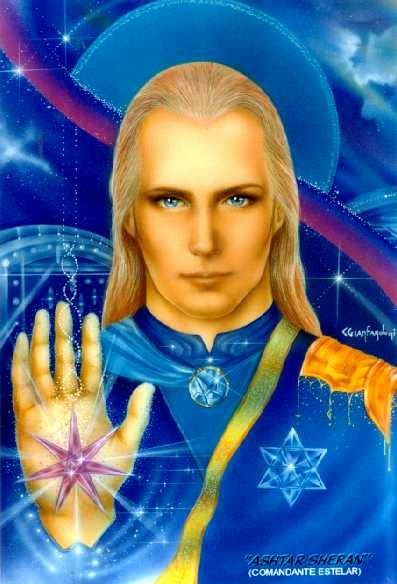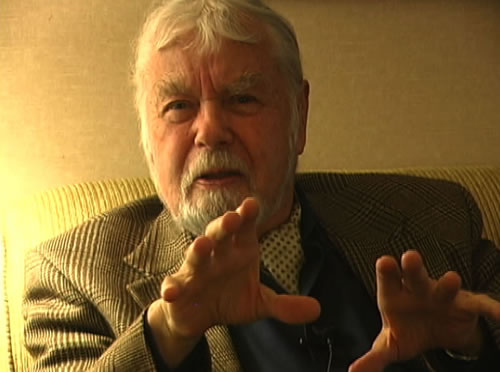Music by Pete Namlook
Venus Transit including excerpts from the May 20, 2012 Lunar Planner.
Additional thoughts by Authors David Tresemer and Adam Gainsburg.
Details on the Venus Transit 2012 web page.
Photo by Jay Ouellet, Quebec Canada.
Image used with permission: 2004©Jay Ouellet, jayouellet@videotron.ca
Venus Transit Dates
The following chart shows the dates of several Venus Transit pairs and the Venus Transit Cycle.
The times in red reveal the primary cycle. The times in blue reveal the dual sub-cycle occurring between pairs. The times in yellow reveal the duration between the last transit of one pair and the first transit of the second pair.
 Venus
is the Roman name for the Greek Aphrodite, goddess of love, grace,
beauty and sexual rapture. Venus has also been called the "jewel of the
sky"; "Eosphorus as the morning star and Hesperus as the evening star";
from a modern day astronomer's view, "Earth's sister planet"; and from
an astrologer's view, the "compliment to Mars."
Venus
is the Roman name for the Greek Aphrodite, goddess of love, grace,
beauty and sexual rapture. Venus has also been called the "jewel of the
sky"; "Eosphorus as the morning star and Hesperus as the evening star";
from a modern day astronomer's view, "Earth's sister planet"; and from
an astrologer's view, the "compliment to Mars."
Other cultural names for Venus include: the Babylonian Ishtar; the Syro-Palestinian goddess Ashtart; the Aztec: Tlahuizcalpantecuhtli (meaning "Lord of the House of Dawn."), an apparition of Quetzalcoatl, the feathered serpent; the Maya: Kukulcan (Venus was the Mayan patron of warfare, with several battles coinciding with significant Venus alignments); and the Norse Sif, noted for her "conjugal fidelity." Aside from the asteroids, Venus is the only main planet named after a goddess--sorry to say for our soul-ar system.
Image: Aphrodite (circa 100 BC): Found on the Aegean island of Melos in 1820.
The Venus-Earth Synodic Cycle
Venus orbits the Sun in 224.701 Earth days ( ~.615 Earth years ), moving slightly faster than Earth. Because of the two different orbital rates of Venus and Earth, Venus must orbit the sun 2.6 times while Earth orbits 1.6 times before the two planets align. This period (583.92 Earth days) is called the Earth-Venus synodic cycle (synod means "place of meeting").
An alignment of Earth, Venus and Sun when Venus lies between Earth and the Sun is called an inferior conjunction. Conversely, a superior conjunction occurs when the three align but with Venus lying on the far side of the Sun. A new Earth-Venus synodic cycle begins on an inferior conjunction, while the superior conjunction marks the mid-point in the synodic cycle.
See Synodic Cycles & Planetary Retrogrades to learn more about synodic cycles and Synodic Astrology.
Because the Earth moves 584 Earth days, (about 1.6 years around the ecliptic) before the two planets align, each alignment occurs about 215.6° further than the previous one (about seven astrological signs apart). As this process continues, five unique Venus-Earth locations are created in the ecliptic. The result is a pentagonal synodic series that takes about eight years and which consists of five synodic cycles (shown below). This near perfect pattern (also called a grand quintile) occurs because five cycles occur in an even number of Earth years--almost.
The sixth alignment, which begins the next synodic series, occurs near the same place as the first one, but it is shifted slightly west from the first one by about 2 to 3 degrees. This slight drift occurs because each synodic series actually occurs in 7.997 years, slightly less than eight years. This causes the entire synodic pentagonal series to continually drift westward around the ecliptic in approximately 2° increments.
Five is the number of the incarnate human--making possible the ascension from the lower quarternary world--that is, from the cyclic and temporal boundaries of space and time.
- The Way is through the Passage of the Heart -
Harmony of the Spheres
Venus revolves in the opposite direction compared to Earth and to its rotation around the sun. Thus, on Venus, the sun and stars rise in the west and set in the east. A Venus day is longer than its year, It takes Venus 243.0187 Earth days to make one rotation, and 224.701 Earth days to orbit the sun. The Venus day is exactly two-thirds of an Earth-year (243 Earth days).
Because Venus revolves once every 2/3 of an Earth year, Venus revolves exactly twelve times in the eight-year pentagonal period--thus showing the same side of her body to Earth in the eight-year period. This near perfect harmonic resonance between the Venus day, the Venus year, and Earth's year is one of the astrophysical dynamics creating the gentle and harmonious astrological character of Venus.
Thus, we have 5 synodic cycles and 12 Venusian days occurring in 8 Earth years creating a near perfect Venus-Earth synergy.
An interesting numerological technique is to explore the ratio between the Product and the Sum of a set of numbers:
The Product: 12 x 8 x 5 = 480.
The Sum: 12 + 8 + 5 = 25
The Product / The Sum = 480 / 25 = 19.2
Qabalistic Numerology defines 192 as the the Divine Mother number. The mother element (the first element) is Hydrogen, from which life proceeds, fuel of the Sun; embodiment of the Divine Mother Principle.
The Arithmetic Reduction of 192 is 12, the Hebrew number Lamed, which corresponds to the sign of Libra - the astrological domicile of Venus.
The Venus Day / Earth Year harmonic interval is 2/3, the perfect musical fifth (3:2), the most universally consonant (pleasing to the ear and emotionally peaceful) harmonic and most durative (strong and long lasting compared to other harmonics which subside before the fifth). The Earth Venus pentagonal harmonic is 5/8, the sixth (8:5). The sixth emotionally invokes the concept of joy or natural innocence; in German, the concept of "lust,” is associated with gold's. natural state (as exemplified in Wagner's Opera "As Rheingold"--a story about forsaking love for gold).
The term "harmonic interval" or "musical interval" refers to the relationship between one frequency (wave) and another, independent of the frequency (time interval) of the wave itself. What are frequencies and how do planets express them? Think of a frequency (or wave) as the exchange of energy between polarities (from one element back to the other element)--how the energy moves. Thus, the old saying. "Are we on the same wave length?" is a question asking if the nature of our energy exchange is harmonious or not (concordant or discordant). Planetary waves, for example, exist between a planet's orbit and the point around which it orbits (orbital period), or between its circumference and its center, just to name two of many planetary waves. We also have the relationship between one wave and another wave: for example, the wave created by the Venusian day and Earthian year; or between the Venus year and Earth year. Wave relationships are harmonic or musical intervals, and there are a variety of musical intervals, that is, wave relationships, all with unique qualities. Some are harmonious and some not so. The more harmony (concordance) the more attraction there is--like between two people--and the more discordance, the more repulsion. Planets and our entire star system of planets compose a variety of musical chords (combinations of frequencies and their harmonic intervals) all continually changing as the ever-changing dance of the planets compose a majestic symphonic expression--the Music of the Spheres.
The most famous work exploring the "Music of the Spheres" is that published in 1619 by Johannes Kepler in his "Harmonices Mundi."
Planets, as do people, have their own "vibrational signature." This signature is a unique blend of waves that are self contained--for example a wave created by the circumference of a planet and its center. Another slang saying is one about "the vibe" that a person is giving off. This refers to the self contained vibrational expression of a person.
Another type of wave is that created by the relationship (harmonic interval) between a self contained vibrational system and another--two vibes interacting. In this case, we have an oscillation occurring between to vibrating elements, like between a planet and its orbit about the sun. Thus an oscillation is also a wave, as is a vibration of one single element, Vibrations can also be composed of a group of oscillations-- the collective vibe given off by a group of interactions. Thus, a person exhibits a vibe that is composed of a variety of inner oscillations (some harmonious, some not so) between the vibrating atoms and molecules within, those that are directed by the thoughts and feelings the person has. A planet exhibits a vibration that is composed of a variety of oscillations found within itself--including the vibrational signature of the collective consciousness created by the interacting (oscillations) relationships (the musical intervals) of the collective populace.
When enough of us, as individuals, express in the relationship of unconditional love, then we, as a planet, will express the resonance of unconditional love, and then we will graduate from the bounds of discord, quarantined and separate from the universe around us, and graduate into the majesty of extraterrestrial awareness--into the awareness of cosmic-God-consciousness.
The Venus Retrograde
When Venus approaches and passes its alignment with Earth (an a new synodic cycle begins, we experience a Venus retrograde period. At that time, when viewing Venus from Earth's perspective, Venus appears to move backward (westward) in the backdrop of the stars.
Venus retrogrades five times in one eight-year "retrograde series"--each retrograde occurs when each Earth-Venus Sun alignment occurs (the synod), and so the retrogrades form in the same sequence that the pentagonal pattern is made (about seven astrological signs between each one). The sixth retrograde begins a new retrograde series in the same location where the first one began, but shifted slightly west from the first. Thus, the entire retrograde series continually drifts westward in the ecliptic along with the synodic series.
An Earth-planet synod always occurs durring the planet's retrograde period. A retrograde can be thought of as a time when we disengage from the previous synodic cycle and re-engage in a new one.
The orbit of Venus is tilted about 3.394° with respect to the orbit of Earth (the ecliptic plane--the plane defined by Earth's orbit around the sun). Two nodes exist in the Venus orbit where Venus crosses the ecliptic plane. The Ascending (North) Node is where Venus moves north of the ecliptic plane during its orbit around the sun. The Descending (South) Node is where Venus moves south of the ecliptic plane.
The five retrograde paths in a synodic series are unique due to the slight tilt between the orbit of Venus and the orbit of Earth. Some paths make a symmetrical s-shaped pattern across the ecliptic and some make loops above and below the ecliptic.
When the Earth-Venus alignment occurs, Venus moves closer to Earth and then away from Earth. If Venus is above or below the ecliptic when that occurs, the line of sight from Earth to Venus moves above or below the ecliptic as well, creating a looped path. The symmetrical s-shaped pattern occurs when the Earth-Venus alignment is near one of the Venus nodes (when Venus is crossing the plane of the ecliptic).
The current location of each synodic cycle is shown below. The Sidereal Heliocentric Location is the ecliptical location of the Venus Earth alignment looking from the Sun. Note that after five synods, a new pentagonal series begins but is shifted a couple of degrees.
Unlike other Earth-planet synods, which do not have an orbital synergy similar to Earth-Venus, our Venus synodic cycles, and themes of growth in consciousness they create, repeat over and over in a consistent pattern, slightly drifting through the zodiak.
See "Synodic Cycles & Planetary Retrogrades" to learn about the synodic cycles with all of the planets and how they create a symphonic expression of growth in consciousness.
Venus Synodic Cycles
Date
Sidereal Heliocentric Location
Synodic Theme
Jun 8 2004 TRANSIT
In the Horns of the Bull
The two retrograde paths of Venus at the
times of the 2004 / 2012 Venus transits
The 2012 Venus transit occurs at 20° 35' sidereal Taurus *
The sidereal signs (not tropical signs) are shown in the above illustration.
To learn of the difference between the sidereal and tropical zodiaks, their intimate relationship, and the Galactic Ayanamsa, please explore the Sidereal Astrology WEB page.
are made by Nick Anthony Fiorenza
using Carina's "Voyager" astronomical software;
Time Cycles Resaerch astrological software;
Adobe design tools, and of course this was all:
* * *
ADDITIONAL MATERIAL FOR THE 2012 VENUS TRANSIT
NOAA animation of the June 8, 2004 Venus transit as captured by the NOAA Solar X-ray Imager. The NOAA Space Environment Center in Boulder, Co. used the NOAA GOES-12 satellite space weather instrumentation to observe the transit of Venus in front of the sun. The GOES observation, using its Solar X-ray Imager, is unique because it records the sun's 2 million degree, outer atmosphere in X-rays. Image Credit: NOAA
see The NASA Picture Gallery of the Venus Transit
http://science.nasa.gov/spaceweather/venustransit/gallery_08jun04_page12.htm
European Southern Observatory's VT-2004 Central Display
http://www.vt-2004.org/photos/
http://sunearth.gsfc.nasa.gov/eclipse/transit/venus0412.html
http://www.saao.ac.za/~wpk/tov1882/tovwell.html
* * *
Mars Cycles
Lunar Planner Home Page
Earth's Precessional Cross
Lunar Planner Archive











No comments:
Post a Comment